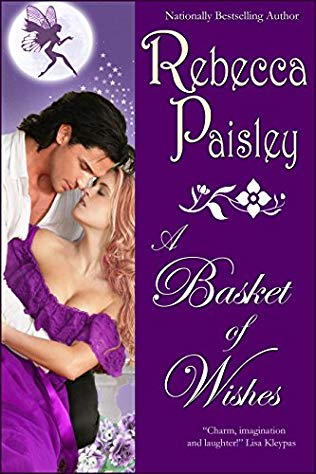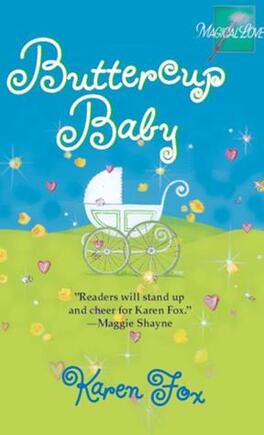|
I recently saw someone cite A Basket of Wishes as an example of a romance novel cover, and it reminded me of something I noticed a while ago. And yes, this is another post on pillywiggins.
Among other appearances, these flower fairies showed up in a spate of romance novels through the 1990s and a little bit into the 2000s. First was A Basket of Wishes by Rebecca Paisley (1995). Then Twin Beds by Regan Forest (1996), A Little Something Extra by Pam McCutcheon (1996), Stronger than Magic by Heather Cullman (1997), Scottish Magic: Four Spellbinding Tales of Magic and Timeless Love (1998), A Dangerous Magic (1999), and Buttercup Baby by Karen Fox (2001). A Basket of Wishes and Buttercup Baby, the first and last in this list, share a number of similarities.
Beyond the rather by-the-numbers plot setup, one of the most striking similarities is the fairy heroine whose tears are gemstones. The idea of tears becoming jewels has its own Aarne-Thompson motif number, D475.4.5. It appears in the Grimms' tale "The Goose Girl at the Well." In the Palestinian story of "Lolabe," the heroine weeps pearls and coral. This trope is often associated with mermaids. "Mermaid tears" is an alternate name for sea glass. There's a Scottish legend - recorded in 1896 when adapted into a poem - that a mermaid's tears became the distinctive pebbles on the shore of Iona. In Chinese legend, mermaids weep pearls; this idea was recorded going pretty far back, for instance by fourth-century scholar Zhang Hua in his Record of Diverse Matters. Rebecca Paisley is the first person to apply this motif to pillywiggins. Karen Fox is the second. So far as I know, they remain the only two authors to do so. As far as differences, they do take place in different time periods. Buttercup Baby is about the pregnancy and slice-of-life fluff. A Basket of Wishes, on the other hand, tends more towards high fantasy and some drama with Splendor’s realm being in danger. Paisley's writing has a number of folklore references. Her pillywiggins (who are synonymous with fairies) live under a mound and tie elf knots in horses' manes. They are incredibly lightweight, like Indian tales of a princess who weighs as much as five flowers. They have no shadows, like Jewish demons and Indian bhoots or bhutas. Most intriguingly, Splendor reveals that her powers are not always limitless. She can't just vanish maladies like a stutter, an unsightly birthmark, or baldness, but must transfer them to someone else - which she does, giving those attributes to the book's antagonists. This harkens to the fairytale known in the Aarne-Thompson system as Type 503. In a common variation, two hunchbacks visit the fairies. One pleases the fairies and they reward him by removing his hunch. The second man is rude and greedy, and the fairies add the first man's hunch to his own. Karen Fox, on the other hand, builds a world based on old English literature: A Midsummer Night's Dream and 17th-century ballads about Robin Goodfellow. She uses “pillywiggins” as a singular noun (which is not uncommon as a variant spelling). Unlike Paisley's version, Fox's pillywiggins are not a name for fairykind as a whole, but a specific subspecies. Fox's use of Ariel as the pillywiggin queen points to Edain McCoy's Witch's Guide to Faery Folk (1994). McCoy was the first to give Ariel as the name of a queen of pillywiggins, and Fox is far from the only author to have followed suit. McCoy's book has been subtly but deeply influential, with large portions posted online by 1996. A now-defunct quiz titled "What type of female fairy are you?", online around 2002, advises the user that "Most of the information used in this quiz was taken (in some cases verbatim) from A Witches' Guide to Faery Folk by Edain McCoy." Pillywiggins are one possible result on the quiz. The new mythology of pillywiggins has been spread mainly through the Internet through sites like this. Creators in the 80's, 90's and early 2000's, like McCoy, Paisley and Fox, used them as basic winged flower fairies. Later authors played with this. In 2011, Julia Jarman made Pillywiggins a singular fairy who stands out from her glittery peers as bold and boyish. The pillywiggens of Marik Berghs’ Fae Wars novels (2013) are “fierce hunters” who ride on birds. Even in these fiercer examples, though, there remains a focus on their minuscule size and "cuteness." Jarman's heroine receives doll clothes. Berghs' pillywiggens speak in chirps and eat crumbs. The attraction of the pillywiggin lies partly in its ability to put a name to the modern archetype of the cute, winged flower fairy. In the first known appearance of pillywiggins, they were listed as a type of flower fairy. However, when it now appears in modern Internet parlance, pillywiggin is the name for the flower fairy category. Despite their similarities, Paisley's and Fox's works both show slightly different takes on pillywiggins. Nearly every author seems to have their own unique approach, while still subtly building up a new piece of folklore. At this point, I feel that if a pre-1970s source for flower-fairy pillywiggins ever shows up, it will be completely unrecognizable compared to the newly evolved myth. Other posts in this series Text copyright © Writing in Margins, All Rights Reserved
1 Comment
|
About
Researching folktales and fairies, with a focus on common tale types. Archives
July 2024
Categories
All
|
Writing in Margins


 RSS Feed
RSS Feed
